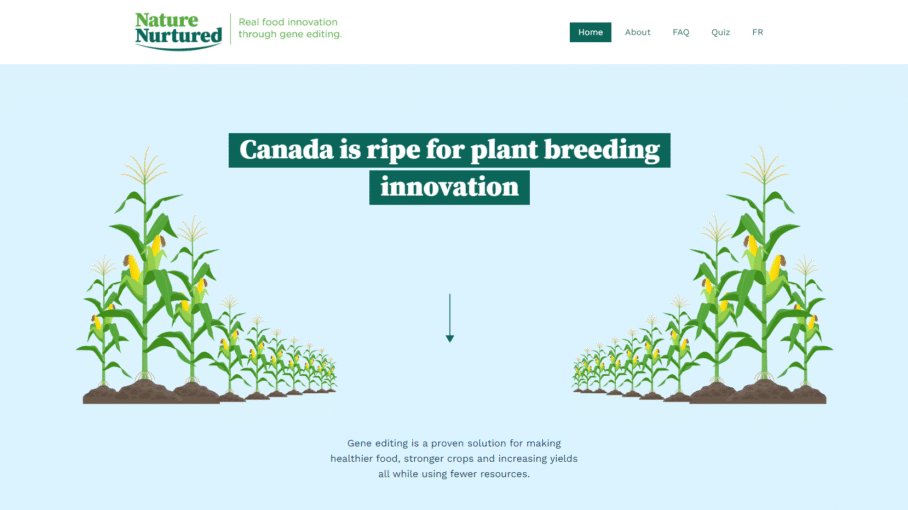Gene editing
 What is gene editing?
What is gene editing?
Gene editing or genome editing in agriculture is a plant breeding tool that can help breeders develop plants that better resist disease, adapt to poor conditions, and improve the quality and quantity of our food supply. Through gene editing, scientists make changes to a plant's DNA sequence that mirrors what could occur in nature or through traditional plant breeding, but more efficiently.
What is CRISPR and how does it work?
Gene editing is a collection of various tools, one of which is CRISPR (clustered regularly interspaced short palindromic repeats), whose developers were awarded the 2020 Nobel Prize in Chemistry. It is one of the simplest, most-accessible and precise methods of gene editing.
This technology allows researchers to edit certain pieces of DNA to add, remove or enhance a desired characteristic in the plant. The cell’s genetic structure then repairs itself automatically resulting in the desired characteristic.
How is gene editing used and what are its applications?
Gene editing has the potential to drive major advances in agriculture. By working within the plants own genetic code, gene editing tools like CRISPR allow scientists to edit specific plant DNA to enhance beneficial characteristics and remove negative ones – all without adding anything that wasn’t already there. This process for improving plants is more precise and efficient than any other form of plant breeding to date.
Are gene edited plants different from genetically modified organisms (GMOs)?
Where GMO plants often include DNA from another organism, gene editing allows scientists to work within a plant’s own genetic code. Gene editing mostly focuses on making improvements that could occur in nature but makes them in a more precise way.
What are the benefits of gene editing?
Gene edited plants produce a variety of benefits for farmers, consumers, and the environment, including:
- Improved environmental sustainability: Heartier and more efficient plants that require fewer inputs and use less resources
- Adapting to climate change: Plant varieties that are better able to survive and thrive under flood or drought.
- Improved nutrition: Food products that are lower in saturated or trans fats or higher in essential nutrients.
- Reducing food waste: Improved shelf-life of food, like produce that stays fresh longer.
- Increased crop yields: Crops that are more resistant to pest and grow more efficiently.
- Improved plant resilience: Plants that can resist disease and adapt to changing climate conditions such as flooding or drought.
- Reduced allergens: for those with food sensitivities and allergies, e.g. low-gluten wheat could make it possible for more people to enjoy bread and pasta.

Learn more about gene editing
